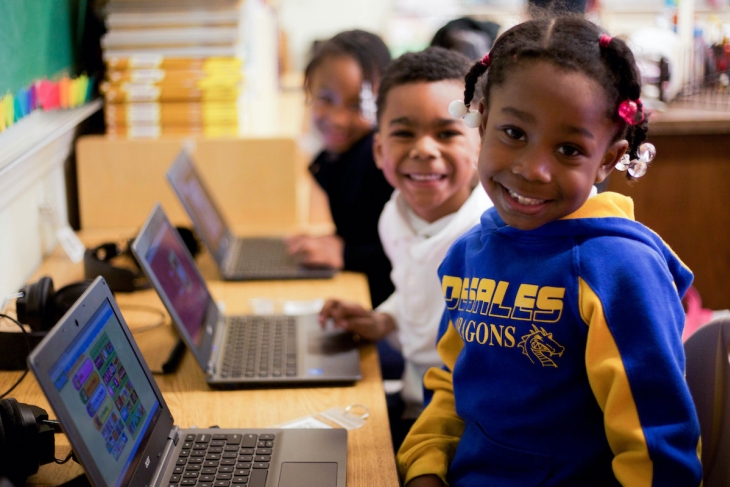In 1908, the Ford Motor Company unveiled the Model T and introduced a reliable, affordable automobile for the middle class. While revolutionary, the Model T also took twelve hours and 7,882 tasks to assemble 1,481 parts, and increased production time meant increased costs. In 1913, Ford introduced an assembly line and cut production to ninety-three minutes. Over the next decade, Model T output increased by 2,824 percent and cost decreased by 39 percent. American mass production would soon impact everything from physical goods to social institutions like schools.
Why is 113-year-old automobile history relevant? Because while manufacturing has evolved, the “factory model” of education has remained largely stagnant. Students still progress in a linear fashion across standards, lessons, chapters, and (ultimately) grades. While we try to meet our students' individual needs, many issues go unresolved. If Henry Ford visited the modern world, he would marvel at the changes made at his namesake company and wonder why schools haven’t progressed.
Nintety-eight years after the introduction of the assembly line, Seton Education Partners, where we both work, sought to change this factory model of education by helping Catholic and charter schools become less linear and more personalized.
In 2011, Seton Education Partners pioneered the first blended rotational learning Catholic school in the country—San Francisco’s Mission Dolores Academy. In this model, students learn through a mixture of small-group, data-driven instruction with their teacher and adaptive online software that allows them to move at their own pace. Over the next six years, the program grew from a pilot site to a thirteen school network serving over 3,400 students. Network schools posted growth on par with some of the highest performing charter school networks in the country while also increasing enrollment by 30 percent.
While we are proud of what our partner schools have accomplished, we are more excited about what they have proved: that a mixture of adaptive software and small-group, data-driven instruction is good for children. This approach has helped thousands of students in nine different cities learn at their own pace over the past decade.
During this time, two other changes have occurred. One, Seton—with the help of its partners—has created an exportable model and resources on small-group instruction, student investment, data analysis, and efficient technology use. And two, more schools have adopted a blended (or personalized) learning model.
In an effort to share what we have learned with the greater education community, we have decided to make all of our resources publicly available for any school or teacher that wants to help more students reach their potential. In addition, we also wanted to pass along some lessons we have learned.
Over the past ten years, we have launched or assisted with blended learning programs in over twenty-five schools. During this time, we have worked alongside dedicated teachers, administrators, and education leaders, and helped thousands of students grow. But we also made some mistakes and learned some hard lessons along the way. Since we started this work in 2011, we learned five major lessons that we’d like to pass along.
1. Motivation matters.
Using adaptive software to enable students to drive their own learning is only half the battle. The other half is ensuring that all students are motivated to push themselves. Like all humans, students are motivated by different things. It is important that you set up systems that allow students to track their own progress, set goals, get updates on their progress, and provide proper recognition when they do meet their goals. These systems need to be age appropriate to keep students engaged. Our resource website has examples of systems used at various grade levels.
2. It’s not about technology.
Blended learning is not a silver bullet. It’s about good teachers using a model that includes technology to leverage small-group, data-driven instruction. The magic of blended learning comes from data-driven, small group instruction. The most successful blended learning teachers use data from each student’s online work to inform what to teach and to whom. This happens most effectively in small groups of students who have similar learning needs, providing personalized instruction with more feedback and increased student-teacher interaction.
3. Not all content is equal.
Digital software options have exploded in recent years, offering a variety of options and price points. Determining what is best for students takes research, trials, and patience. We let quality drive our choices, not price. We lean towards content that adapts to each student’s strengths, rather than a preset lesson plan of grade level material, and allows the teacher to assign lessons and create custom pathways for students.
4. Change takes time and hard work.
A school does not become a blended learning school overnight. It takes an incredible amount of buy in from staff and families, changes to class schedules, classroom layout updates, technology upgrades, and an open, can-do attitude. Upfront and ongoing training is needed to facilitate these changes, roll out the model strategically, and ensure teachers receive support as they become more advanced with this teaching approach.
5. It requires strong financial planning.
Starting a viable, long-term blended learning program requires more than just buying computers and online content. Schools must prepare for ongoing maintenance of computers, plan for when computers need replacing, and budget for annual content-provider contracts. With adequate planning, schools can learn about and use federal e-rate programs and state funding (private schools are eligible in some states) to help minimize these costs.
—
As more and more schools decide to “go blended,” we hope schools will learn from our lessons, big and small. To support this, we have launched a free blended learning resource website where educators can find over 150 downloadable resources, including trainings, how-to guides, ready-to-use templates, and tips for using blended learning. Visit blendedresources.org to explore what we have to offer. It is our hope that this website helps new and veteran blended learning schools alike so that all students have the opportunity to receive an academically excellent education.


